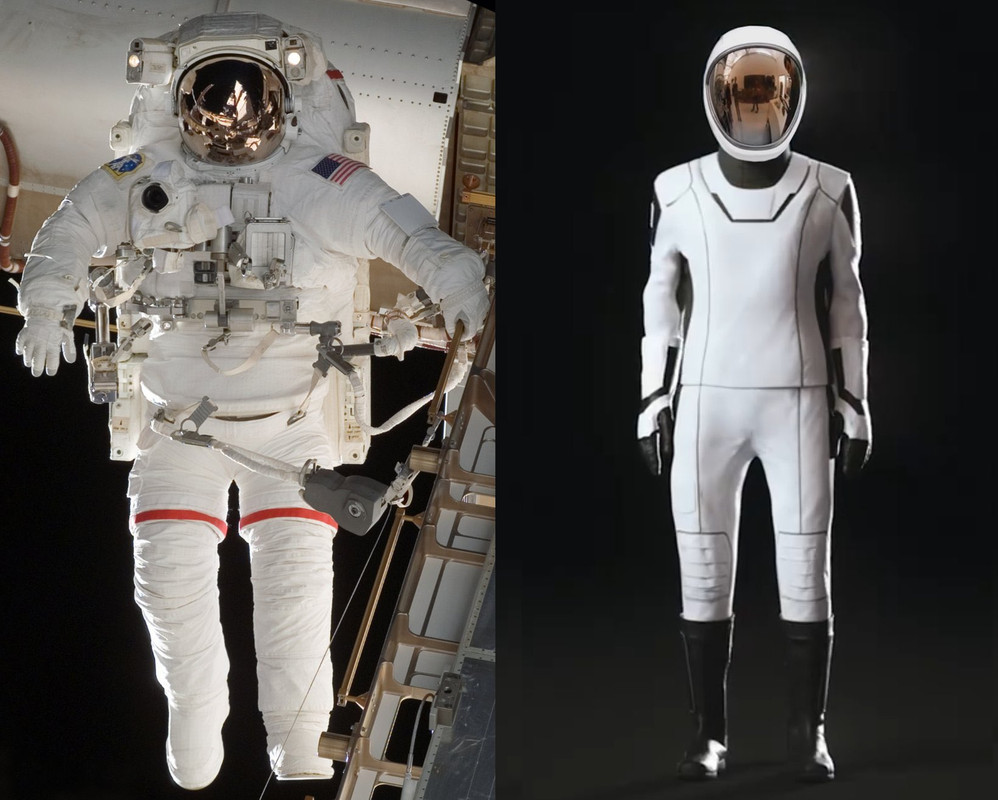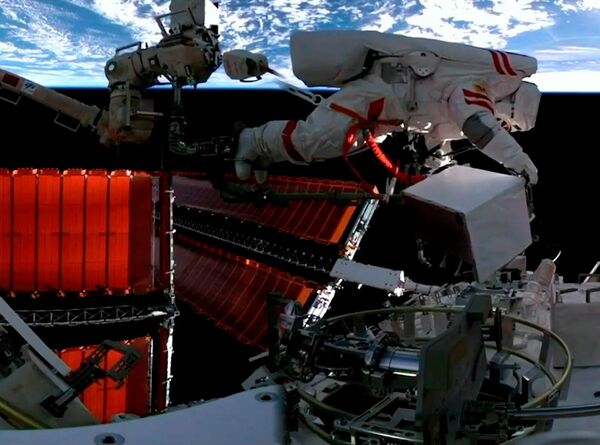
SpaceX 舱外太空服和以前NASA太空服的对比,巨大的进步和跨越!
版主: Softfist
#15 Re: SpaceX 舱外太空服和以前NASA太空服的对比,巨大的进步和跨越!
https://m.guancha.cn/internation/2024_0 ... 8267.shtml
老粥科普
昨天 22:27来自广东省
先讲三点:
一、这是套“简版”的舱外航天服。
二、与现在通行的舱外服不同,它没有生命保障系统,由“脐带”与舱内生保设备相连,因此宇航员“走”不远。
三、这套服装在抗冲击和防辐射方面也做了简化,无法在长时间舱外活动的情况下对宇航员进行有效保护。
老粥科普
昨天 22:27来自广东省
先讲三点:
一、这是套“简版”的舱外航天服。
二、与现在通行的舱外服不同,它没有生命保障系统,由“脐带”与舱内生保设备相连,因此宇航员“走”不远。
三、这套服装在抗冲击和防辐射方面也做了简化,无法在长时间舱外活动的情况下对宇航员进行有效保护。
#17 Re: SpaceX 舱外太空服和以前NASA太空服的对比,巨大的进步和跨越!
nasa 是政府工 死了算烈士 为国捐躯 国家还丢面子烈属得管一辈子
spacex算打工人 死了就死了 最多给你买份保险 能减就减
spacex算打工人 死了就死了 最多给你买份保险 能减就减
#20 Re: SpaceX 舱外太空服和以前NASA太空服的对比,巨大的进步和跨越!
The suit is not designed for high-intensity extravehicular activities lasting six or seven hours, but only for short-term extravehicular activities. It does not have an independent life support system, but is completely connected to the equipment in the spacecraft through an "umbilical cord"-like hose to obtain oxygen and maintain life conditions such as air pressure, temperature and humidity. It also has no liquid cooling equipment, and can only rely on the thermal insulation capacity of the material and control the time of extravehicular activities to keep the internal temperature from being too high or too low.
As long as the "umbilical cord" of this suit is broken, the astronaut will die, unlike the conventional space suit that has the ability to survive independently in space. As for preventing micrometeorites, it can only do something from the perspective of probability. Thin space suits are designed to resist micrometeoroids and orbital debris of a certain size, but the impact resistance is definitely not as good as thick ones. However, since the time of extravehicular activities is particularly short, the probability of being hit by micrometeorites is very low, so this aspect is not a big problem.
So SpaceX's extravehicular suits look beautiful and flexible, but in fact they are at the expense of performance. Astronauts cannot go too far or stay too long after leaving the spacecraft, and must return quickly. On the other hand, if the four astronauts really want to wear the more advanced extravehicular suits, the space inside the Dragon spacecraft may not be enough.
NASA said:
https://www.nasa.gov/wp-content/uploads ... y_unit.pdf
https://www.nasa.gov/humans-in-space/wh ... spacesuit/
https://www.lpi.usra.edu/lunar/artemis/ ... N55224.pdf
https://nap.nationalacademies.org/read/5826/chapter/6
As long as the "umbilical cord" of this suit is broken, the astronaut will die, unlike the conventional space suit that has the ability to survive independently in space. As for preventing micrometeorites, it can only do something from the perspective of probability. Thin space suits are designed to resist micrometeoroids and orbital debris of a certain size, but the impact resistance is definitely not as good as thick ones. However, since the time of extravehicular activities is particularly short, the probability of being hit by micrometeorites is very low, so this aspect is not a big problem.
So SpaceX's extravehicular suits look beautiful and flexible, but in fact they are at the expense of performance. Astronauts cannot go too far or stay too long after leaving the spacecraft, and must return quickly. On the other hand, if the four astronauts really want to wear the more advanced extravehicular suits, the space inside the Dragon spacecraft may not be enough.
NASA said:
https://www.nasa.gov/wp-content/uploads ... y_unit.pdf
https://www.nasa.gov/humans-in-space/wh ... spacesuit/
https://www.lpi.usra.edu/lunar/artemis/ ... N55224.pdf
https://nap.nationalacademies.org/read/5826/chapter/6






